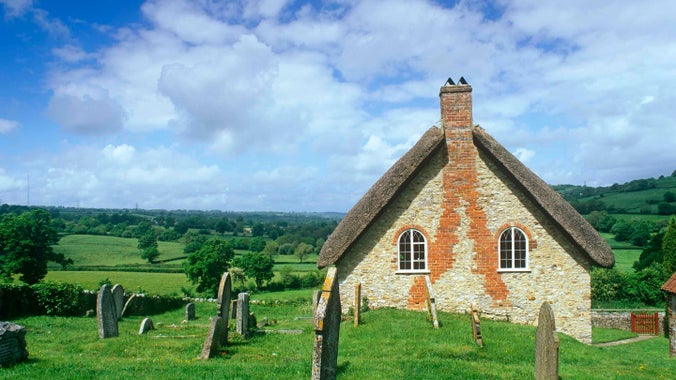
Become a member
Join today and help protect nature, beauty and history – for everyone, for ever. Enjoy access to more than 500 places with National Trust membership.
Atmospheric 17th-century thatched Baptist meeting house
Dalwood, Axminster, Devon, EX13 7DU

| Asset | Opening time |
|---|---|
| Meeting house | 10:00 - 15:00 |
A small 3 space car park with gravel surface, is available for visitors. There are no designated blue badge parking spaces available.
Level access. Uneven flooring in some parts. No toilets. Undulating terrain outside.
Inside, narrow aisles, approximately 80cm wide, maybe unsuitable for wheelchair users.
Inside the Meeting House there is pine bench seating, which are the original pews used by worshipers. Outside is a picnic bench, which is accessed up two uneven steps and along a short grassy path.
Entrance to the chapel graveyard is through a gate, with small step up. Access to the upper level of the graveyard is via steep concrete and grass covered steps. There is no handrail. On the upper level of the graveyard a mown, uneven grassy path follows a short route around the gravestones. The upper level of the chapel is accessed by a steep stairway.
17th-century thatched Baptist meeting house. Set into the hillside, hidden and left virtually unchanged.
Explore the historical features of Loughwood Meeting House, one of Britain's earliest surviving Baptist meeting houses, as well as what to see and do in the surrounding area.


Dine in style or explore the grounds at this impressive manor stay.
Sorry, there are no upcoming events at this place
Discover Loughwood, one of the earliest surviving Baptist churches in the country. Founded in secret during a time of great persecution towards non-conformists, this beautiful chapel is set into the hillside and looks out over the rolling east Devon countryside with views of the Axe Valley.
Step through the front door to travel back in time and explore this place of worship which has remained virtually unchanged since the 18th century.
The chapel is used twice a year by the local Kilmington Baptist Church and is available for prayer and burials.
Please note:
The main door to the meeting house turns the other way. No toilets are available at this site.
The history of Loughwood Meeting House is one of secrecy and religious persecution dating back 300 years. Discover more of its story up until it was handed to the Trust in 1969.

Search for live volunteering opportunities, or register your interest with Loughwood Meeting House.


Join today and help protect nature, beauty and history – for everyone, for ever. Enjoy access to more than 500 places with National Trust membership.
By sharing your email address you’re agreeing to receive marketing emails from the National Trust and confirm you’re 18 years old or over. Please see our for more information on how we look after your personal data.